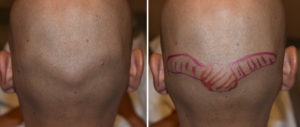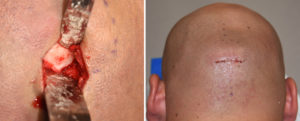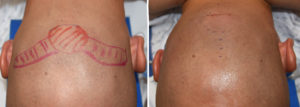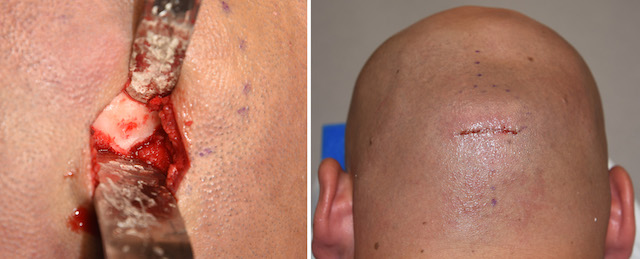Background: While the skull appears as a smooth surfaced structure it has numerous raised bony areas at its edges. These are most apparent at the front of the skull in the brow area as well as on the back of the skull at its lower edge. These larger bony prominences have a purpose and are typically the result of musculoligamentous attachments. The effects of muscular contraction results in the development of more bone at these points to support them.
On the back of the skull (occiput) these raised bony areas are particularly seen due to the attachments of the neck muscles and their overlying fascia. Known as the nuchal lines, these are four curved ridges of bone of which the most visible is the superior nuchal line which serves as attachments for the splenius capitis, trapezius and occipitals muscles. The superior nuchal line exists on both sides of the occipital skull and meets in the middle as the external occipital protuberance, also known as the occipital knob.
The occipital knob is prone to overgrowth and is a not infrequent unaesthetic enlargement seen at the center of the inferior edge of the back of the head. While this generally occurs as an isolated knob of bone, it can also occur with enlargement of the superior nuchal line on each side of it. This creates a gull wing shape appearance which is most noticeable on the shaved male head.



Case Highlights:
1) The centrally located occipital knob skull deformity can be associated with prominent nuchal ridges.
2) Both the occipital knob and nuchal ridge represent bony overgrowths or exostoses.
3) While the occipital knob can be reduced through a small direct scalp incision the nuchal ridge requires a much longer incision to reduce.
Dr. Barry Eppley
Indianapolis, Indiana




